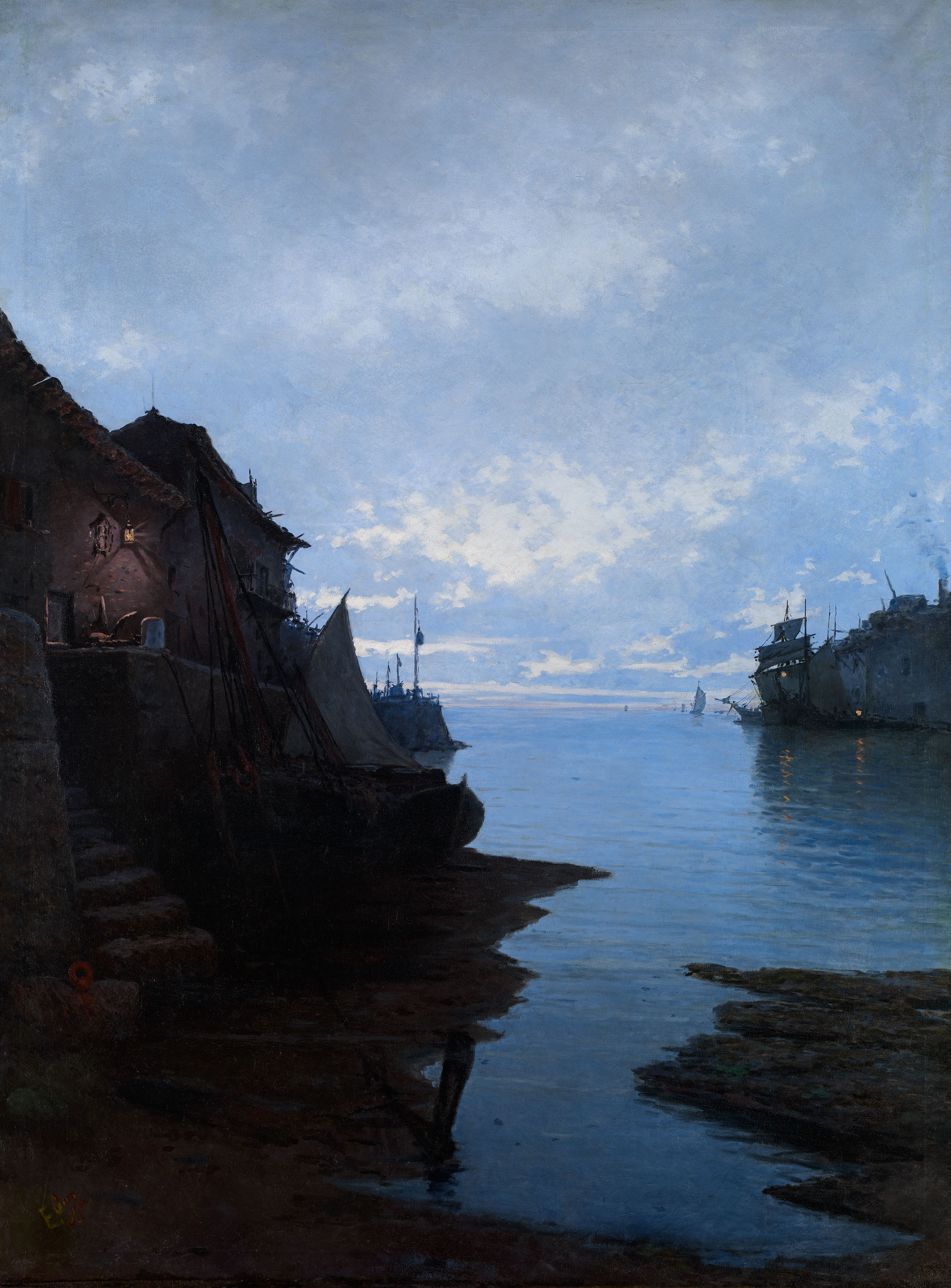
Emilio Ocón y Rivas
Seascape
1884-
Oil on canvas
200 x 148 cm
CTB.1994.37
-
© Colección Carmen Thyssen-Bornemisza en préstamo gratuito al Museo Carmen Thyssen Málaga
This exceptional seascape is by the master of Malaga marine painting Emilio Ocón y Rivas. Although few nocturnal paintings by Ocón are known to exist, documentary evidence proves that he produced a number of such paintings, of which this one (strictly speaking a twilight scene) is a fine example. Most of his work, however, features the clear, bright light of the Mediterranean coast.
Of high pictorial quality, this canvas depicts a small port in northern Spain (as the buildings in the foreground reveal) where beached skiffs lean against the jetty at a moment when the strong Atlantic tide is at its lowest. The steep roofs with broad eaves, the wooden balconies and the stone niche leave little doubt as to geographic location.
Where composition and colour are concerned in this painting (and indeed in all of Ocón's production), the influence of the artist’s Flemish master Jean-Paul Clays is evident. Also apparent is his contact with the Hague School. Here a precise, literal and meticulous form of realism is complemented by so perfect a technique in the treatment of light that the influence of the excellent marine painter Hendrik Willem Mesdag is clearly evident. Limpid salty atmospheres, heaving waters (although not in this case), transparent horizons and bright skies are features typical of the marine style which Ocón assimilated so perfectly.
It is precisely light, that essential factor in Ocón's oeuvre, that is the protagonist of this painting which displays an excellent example of rear illumination based on cold tones. The range of blues, including azure and ultramarine, mingled with whites and greys that serve as a backdrop, engage in a dialogue with the "earths" – the pigments most commonly used in the history of art – which run from umbers and siennas to hematites and verdachos.
As regards composition, an innovative language is evident in this picture, since, despite the asymmetry, a perfect balance is achieved by the arrangement of masses. These are supported vertically at the sides and the use made of their different sizes and specific elements produces a wide range of planes. The nearest of these, which form the sea backgrounds, are followed by the intermediate ones, which represent different depths as reflected by the steps, the beached boats and the illuminated niche. These in turn give way to those farthest away, such as the port's defensive wall on the left and the boats and the line of the horizon on the right. All reflect an almost photographic treatment of reality - the aim, when all is said and done, of open-air landscape painting. Especially noteworthy in this canvas is the sensation of depth that is conveyed in a superb example of light used to achieve that end. Finally, a few touches of colour make a significant contribution to those effects in the rust of the anchoring ring on the left, the green of the algae on the seabed and the points of light in the niche and in the two lanterns of the ships anchored on the right.
All things considered, this painting is an excellent and unique landscape in which Emilio Ocón not only displayed his mastery as an artist but also expressed the sensitivity and emotion that filled him when contemplating nature.
Amelia Esteve Secall